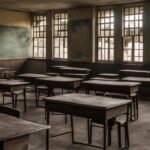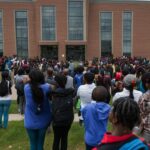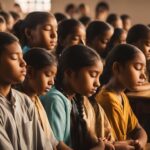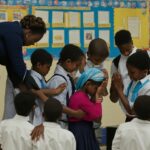In the United States, the presence of prayer in public schools has sparked heated discussions and debates. Advocates argue that prayer should be allowed as a means to promote spirituality and moral development among students, while others believe it violates the separation of church and state. This article delves into the various perspectives surrounding this topic to provide a comprehensive analysis of the issue.
Key Takeaways:
- There is a heated debate regarding the inclusion of prayer in public schools.
- Advocates argue that prayer promotes spirituality and moral development.
- Opponents believe prayer violates the separation of church and state.
- The issue involves considerations of religious freedom and constitutional rights.
- A balance must be struck between diverse beliefs and constitutional principles.
The Importance of Religious Freedom in Education
The debate surrounding prayer in public schools often centers on the concept of religious freedom. Advocates for prayer argue that restricting prayers in schools infringes upon students’ rights to freely express and practice their religious beliefs. On the other hand, opponents believe that allowing prayer in public schools can be seen as an endorsement of a specific religion, thereby violating the First Amendment’s establishment clause. This section explores the importance of religious freedom in education and its implications for the prayer debate.
Religious freedom is a fundamental aspect of the American society, protected by the First Amendment of the United States Constitution. It guarantees individuals the right to choose, exercise, and express their religious beliefs without interference from the government or any external entities. In the context of education, religious freedom plays a crucial role in allowing students to explore and practice their faith while fostering a tolerant and inclusive learning environment. It enables students to engage in religious activities, such as prayer, in accordance with their beliefs.
However, the issue becomes complex when it comes to public schools, which are government-funded institutions. The First Amendment also prohibits the government from establishing or endorsing a specific religion. This means that public schools must remain neutral in matters of religion to ensure that no particular belief system is favored or promoted over others. Striking a balance between religious freedom and the separation of church and state is essential to respect the diverse beliefs of students and uphold the principles of the First Amendment.
| Religious Freedom in Education |
|---|
| Protects students’ rights to freely express and practice their religious beliefs |
| Fosters a tolerant and inclusive learning environment |
| Allows students to engage in religious activities, such as prayer |
| Requires public schools to remain neutral in matters of religion |
| Strikes a balance between religious freedom and the separation of church and state |
It is important to recognize that religious freedom in education does not mean imposing one’s beliefs on others or infringing upon the rights of fellow students. It calls for mutual respect and understanding among individuals of different faiths or no faith at all. Schools play a vital role in creating an atmosphere where all students feel included and respected, regardless of their religious affiliations. By upholding religious freedom in education, we can foster a society that embraces diversity and allows individuals to grow and thrive in an environment that respects their rights and beliefs.
The School Prayer Debate: Pros and Cons
The school prayer debate is a contentious issue that elicits strong arguments from both supporters and opponents. Understanding the pros and cons of prayer in public schools is essential for forming an informed perspective on this complex topic.
Pros of Prayer in Schools
Supporters of prayer in public schools emphasize several advantages that they believe it brings to students and the educational environment. These include:
- Promoting moral values: Prayer can be seen as a tool to instill ethical principles and guide students towards making positive choices.
- Fostering a sense of community: Prayer can create a shared experience that brings students together, fostering a sense of unity and connectedness.
- Allowing open expression of faith: Prayer provides an avenue for students to openly express and practice their religious beliefs, fostering religious freedom and individual autonomy.
Supporters argue that these benefits contribute to students’ overall well-being and academic success.
Cons of Prayer in Schools
Opponents of prayer in public schools raise concerns about the potential negative consequences it may have. Some of the arguments against prayer in schools include:
- Creating division among students: Prayer may exclude students of different religious backgrounds or those who do not adhere to any specific religion, leading to feelings of isolation and marginalization.
- Blurring the line between church and state: Allowing prayer in schools can be seen as an endorsement of a particular religious belief, potentially infringing on the separation of church and state.
- Impeding critical thinking: Critics argue that prayer may divert students’ attention from academic pursuits and hinder their ability to engage in critical thinking and rational decision-making.
Opponents assert that these concerns outweigh the potential benefits and advocate for a secular educational environment.

| Pros of Prayer in Schools | Cons of Prayer in Schools |
|---|---|
| Promotes moral values | Creates division among students |
| Fosters a sense of community | Blurs the line between church and state |
| Allows open expression of faith | Impedes critical thinking |
Religious Expression in Public Schools
Religious expression in public schools encompasses a wide range of activities, beyond just prayer. It includes wearing religious attire, displaying religious symbols, engaging in religious discussions, and participating in religious clubs or organizations. These forms of expression are often seen as a way for students to freely exercise their religious beliefs and express their identities.
Proponents argue that allowing religious expression promotes diversity and encourages students to embrace their faith. It can foster a sense of belonging and create a supportive environment for religious students. Additionally, they believe that exposure to different religions can promote tolerance and understanding among students from various backgrounds.
However, critics raise concerns about potential religious discrimination and the impact of religious activities on the educational environment. They argue that certain forms of religious expression, such as prayer or proselytizing, can isolate or exclude non-religious students. There are also concerns about the school’s role in endorsing or favoring certain religious beliefs over others, which may violate the principle of religious neutrality.
“Religious expression in public schools should strike a balance between protecting individual rights and maintaining a respectful and inclusive environment for all students.”
Ultimately, finding the right balance between accommodating religious expression and safeguarding the rights and well-being of all students is key. Schools should establish clear guidelines and policies that respect religious freedom while also upholding the principles of inclusivity and neutrality. By fostering an environment where diverse religious beliefs are respected and everyone feels valued, public schools can strive to create an atmosphere that promotes understanding, acceptance, and mutual respect.
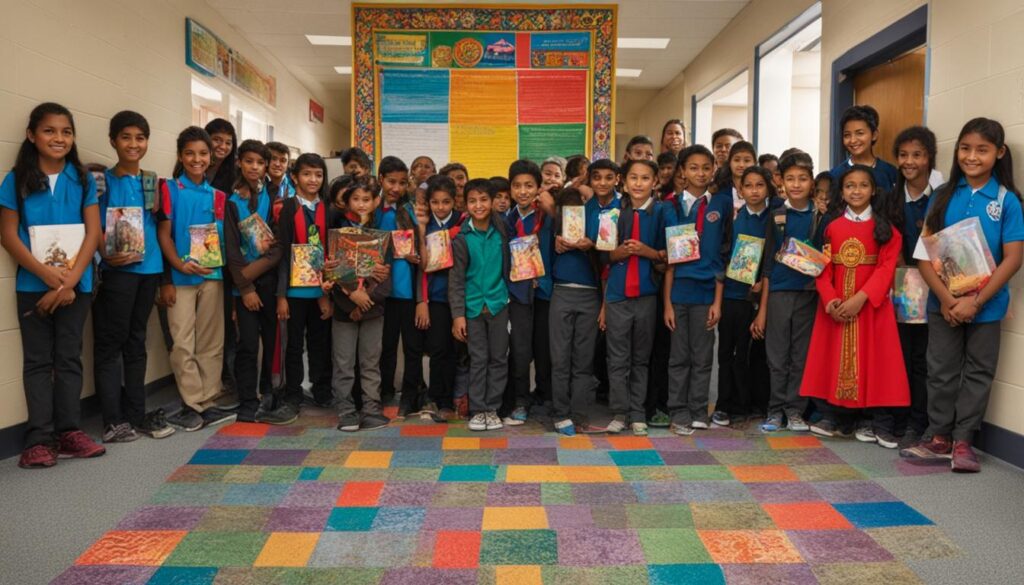
The Constitutionality of Prayer in Schools
One of the key aspects of the prayer debate in public schools is the constitutionality of allowing prayer in the educational setting. This issue stems from the principle of the separation of church and state, which is enshrined in the First Amendment of the United States Constitution. The First Amendment prohibits the government from establishing or endorsing a specific religion, ensuring religious freedom for all individuals.
Landmark court cases have played a significant role in shaping the legal interpretation of prayer in public schools. For example, the Supreme Court case of Engle v. Vitale in 1962 ruled that the recitation of a state-composed prayer in public schools violated the establishment clause of the First Amendment. Similarly, the School District of Abington Township v. Schempp case in 1963 declared that school-sponsored Bible reading in public schools was unconstitutional.
These court decisions have established the precedent that state-sanctioned prayer or religious activities have no place in public schools. Any form of government endorsement or promotion of a particular religion through prayer violates the separation of church and state. The Supreme Court has consistently upheld the importance of maintaining a neutral stance regarding religion in public schools to ensure inclusivity and respect for all religious beliefs.
| Key Points | Implications |
|---|---|
| Supreme Court rulings | Established legal precedents against state-sanctioned prayer in public schools. |
| Separation of church and state | Maintains neutrality and prevents government endorsement of specific religions. |
| Religious freedom | Protects the rights of individuals to freely practice their own religious beliefs without interference from the government. |
It is essential to recognize that while prayer is not allowed in public schools, students still have the right to engage in private, voluntary prayer on their own. The distinction lies in the fact that public schools, as government institutions, must maintain a secular environment that respects the diverse religious beliefs of students and does not favor any particular religion. By upholding the constitutional principle of the separation of church and state, public schools can provide an inclusive educational experience for all students.
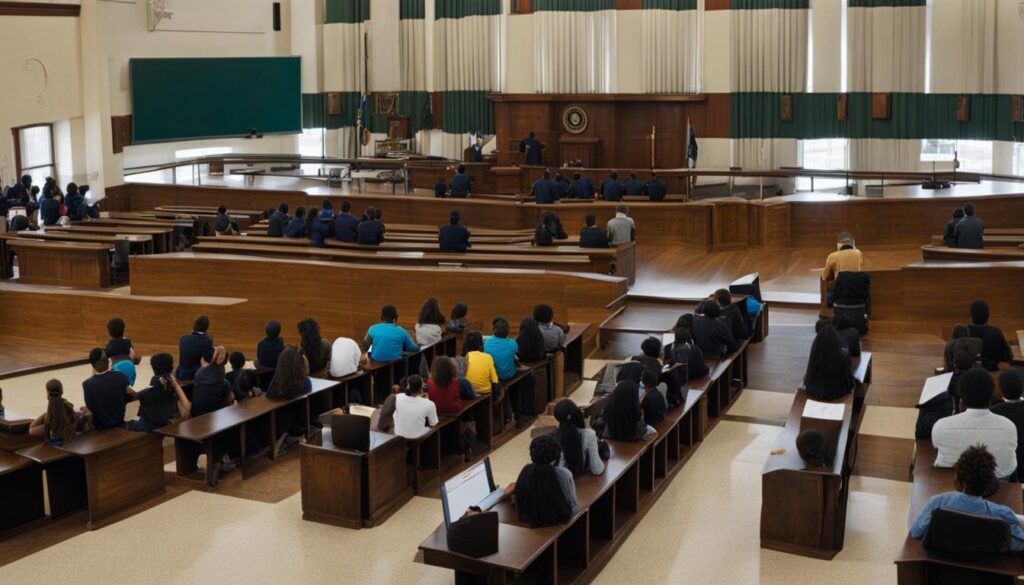
“The First Amendment prohibits the government from establishing or endorsing a specific religion, ensuring religious freedom for all individuals.”
Historical Perspectives on Prayer in Public Schools
Understanding the historical context of prayer in public schools provides valuable insight into the ongoing debate. The presence of prayer in public schools has a history rooted in tradition and religious practices. However, the legality and constitutionality of prayer in public schools have evolved over time, shaping the current landscape of this issue. Historical perspectives on prayer in public schools shed light on the shifting societal and legal attitudes towards the role of religion in education.
In the early history of the United States, prayer and religious instruction were commonplace in public schools. These practices reflected the predominantly Christian beliefs of the time. However, as the country became more diverse and religious affiliations expanded, concerns arose about the inclusion of non-Christian students and the potential violation of their religious freedom.
With the landmark Supreme Court case of Engel v. Vitale in 1962, the practice of state-sponsored prayer in public schools was deemed unconstitutional. The court ruled that the recitation of a state-composed prayer violated the First Amendment’s establishment clause, which prohibits the government from endorsing or promoting a specific religion.
The Impact of Engel v. Vitale
The Engel v. Vitale case set a precedent that reframed the role of religion in public schools. It established the separation of church and state as a guiding principle and emphasized the importance of protecting the religious freedom of all students. This ruling marked a significant turning point in the debate over prayer in public schools and highlighted the need for a secular educational environment that respects the diverse religious beliefs of students.
| Year | Event |
|---|---|
| 1789 | Adoption of the First Amendment to the United States Constitution, which ensures freedom of religion. |
| 1840s | Common practice of prayer and religious instruction in public schools. |
| 1962 | Engel v. Vitale Supreme Court case rules that state-sponsored prayer in public schools violates the establishment clause of the First Amendment. |
| 1971 | School District of Abington Township v. Schempp Supreme Court case prohibits school-sponsored Bible reading. |
| 1992 | The Supreme Court case Lee v. Weisman rules that public school-sponsored prayer at graduation ceremonies is unconstitutional. |
These legal milestones have shaped the current understanding of prayer in public schools, emphasizing the importance of maintaining a secular education system that respects and protects the religious freedom of all students.
The Impact of Prayer on Education
When it comes to the debate over prayer in public schools, one of the key points of contention is the potential impact on education. Proponents of prayer argue that it has the ability to foster a moral and ethical foundation among students, enhance their sense of purpose, and create a positive school climate. They believe that prayer can contribute to students’ overall well-being and academic success. However, opponents voice concerns that prayer may distract students from their studies, impede critical thinking, and create divisions among students of different religious backgrounds.
Advocates for prayer in public schools often highlight the potential benefits it can have on students’ character development. They argue that prayer can instill values such as compassion, empathy, and respect, which can help students navigate the challenges they face both inside and outside of school. By fostering a sense of belonging and promoting a positive school climate, prayer proponents believe that students will be more engaged in their education and motivated to succeed.
On the other hand, critics of prayer in schools express concerns that it may hinder a secular educational environment. They argue that public schools should be inclusive spaces that respect and accommodate the diverse beliefs and backgrounds of all students. The presence of prayer, they contend, may alienate students who do not hold religious beliefs or belong to different faith traditions. Furthermore, opponents caution that prayer could potentially lead to the endorsement of a specific religious viewpoint, which would be a violation of the separation of church and state.
In order to fully understand the impact of prayer on education, it is crucial to consider the perspectives of both proponents and opponents. By examining empirical research, case studies, and anecdotal evidence, a more comprehensive understanding of the potential effects of prayer in public schools can be gained. This section aims to delve into the complexities of this debate, presenting a balanced analysis of the impact of prayer on education.
Multicultural Acceptance and Mutual Respect
In a diverse society like the United States, promoting multicultural acceptance and mutual respect is crucial in school environments. By fostering an inclusive and respectful atmosphere that embraces all religious beliefs and practices, educational institutions play a vital role in shaping the values and attitudes of students. This section explores the significance of multicultural acceptance and the importance of mutual respect in public schools.
Multicultural acceptance refers to the recognition and celebration of different cultures, religions, and backgrounds within a diverse community. It involves valuing and respecting the unique perspectives, traditions, and experiences that individuals bring to the table. Embracing multicultural acceptance in public schools can create an environment where students feel valued, included, and safe to express their identity and beliefs.
Mutual respect, on the other hand, entails treating others with dignity, regardless of their religious beliefs or cultural background. It involves recognizing the inherent worth and rights of every individual and refraining from discriminatory or prejudiced behavior. By fostering mutual respect in schools, students learn to appreciate diversity, develop empathy, and build positive relationships with their peers.
Promoting Cultural Sensitivity
One way to promote multicultural acceptance and mutual respect in public schools is by prioritizing cultural sensitivity in the curriculum and school policies. Educators should incorporate materials and discussions that highlight different religions, cultures, and perspectives to foster understanding and appreciation. Creating opportunities for students to engage in intercultural activities, such as multicultural festivals or student-led presentations, can also contribute to a more inclusive learning environment.
Another crucial aspect of promoting multicultural acceptance is training staff and teachers to be culturally competent. Professional development programs that focus on cultural sensitivity, diversity awareness, and inclusive classroom practices can equip educators with the necessary knowledge and skills to effectively engage with students from various backgrounds.
Debunking Misconceptions about Prayer in Schools
As the debate regarding prayer in public schools continues, it is essential to address the misconceptions that often surround this topic. By debunking these misconceptions, we can foster a more informed and productive discussion. Let’s explore some of the common misunderstandings surrounding prayer in schools:
- Misconception 1: Prayer in schools is completely banned
- Misconception 2: Allowing prayer in schools violates the First Amendment
- Misconception 3: Prayer in schools forces religion on students
Contrary to popular belief, prayer is not entirely banned in public schools. The separation of church and state principle ensures that schools cannot endorse or promote a specific religion. However, students are still allowed to engage in voluntary, non-disruptive individual prayer or participate in student-led religious clubs or activities during non-instructional time.
Another misconception is that permitting prayer in public schools automatically infringes upon the First Amendment’s establishment clause. In reality, the Supreme Court has recognized that student-led, non-coercive prayer is a form of protected speech under the First Amendment. As long as prayers are initiated and led by students themselves, without any involvement or endorsement from school officials, they can coexist with constitutional principles.
Some argue that prayer in public schools forces religious beliefs onto students who may not share the same faith. However, allowing voluntary prayer or religious expression does not impose a particular religion on anyone. It simply provides an opportunity for students to exercise their individual religious freedoms and express their personal beliefs in a respectful and inclusive manner.
By dispelling these misconceptions, we can move towards a more nuanced understanding of the prayer debate in public schools. It is crucial to remember that the goal is not to favor one religion over another, but rather to create an inclusive environment that respects the rights and beliefs of all students.
| Common Misconception | Fact |
|---|---|
| Prayer in schools is completely banned | Students can engage in voluntary, non-disruptive prayer and participate in student-led religious activities. |
| Allowing prayer in schools violates the First Amendment | Student-led, non-coercive prayer is protected speech under the First Amendment. |
| Prayer in schools forces religion on students | Voluntary prayer or religious expression does not impose a specific religion on anyone. |
Supporting Religious Freedom Outside of Public Schools
While the debate over prayer in public schools continues, it’s important to acknowledge that private schools play a significant role in supporting religious freedom. Private schools offer an alternative educational environment where students can freely express and practice their religious beliefs without the same legal and constitutional constraints as public schools. By providing diverse educational options, private schools accommodate students from various religious backgrounds, fostering an inclusive atmosphere that respects individual faith.
Private schools often prioritize religious education, offering curriculum and activities that align with specific religious beliefs. This allows students to delve deeper into their faith and receive a comprehensive religious education alongside their academic studies. The emphasis on religious principles and teachings in private schools provides a unique opportunity for students to develop a strong moral foundation and deepen their understanding of their chosen belief system.
Furthermore, private schools can create a close-knit community that shares similar religious values, offering a supportive network and sense of belonging. Students attending private schools often find comfort in being surrounded by peers and educators who share their religious convictions. This sense of community fosters an environment where students can openly express and explore their faith, reinforcing the importance of religious freedom in their educational journey.
| Private Schools and Religious Freedom | Benefits |
|---|---|
| Diverse Religious Education | Students can receive a comprehensive religious education that aligns with their specific beliefs. |
| Inclusive Atmosphere | Private schools provide an environment that respects and accommodates various religious backgrounds. |
| Strong Moral Foundation | Emphasis on religious principles and teachings helps students develop a solid moral framework. |
| Supportive Community | Private schools foster a close-knit community of individuals who share similar religious values. |
In conclusion, while the debate over prayer in public schools continues, private schools offer an alternative educational setting that supports religious freedom. These institutions provide diverse religious education, foster an inclusive atmosphere, and promote a strong moral foundation. Additionally, private schools create a supportive community where students can openly express and explore their faith. By recognizing the role of private schools in supporting religious freedom, we can ensure that students have access to educational environments that align with their beliefs and values.
Conclusion
In conclusion, the debate over whether prayer should be allowed in public schools is a multifaceted issue that requires careful consideration. It involves balancing the principles of religious freedom and the separation of church and state, while also ensuring inclusivity and respect for diverse beliefs.
It is evident that there are valid arguments on both sides of the debate. Supporters of prayer in public schools emphasize its potential benefits in promoting moral values, fostering a sense of community, and nurturing students’ spiritual development. However, opponents raise concerns about potential religious discrimination, the exclusion of non-religious students, and the violation of the establishment clause.
The constitutional landscape surrounding prayer in public schools has been shaped by landmark court cases, and it is crucial to respect the principles established in these legal precedents. Educational institutions must uphold the First Amendment’s prohibition of government endorsement or establishment of religion, while also ensuring that students’ rights to freely express and practice their religious beliefs are protected.
Ultimately, the decision regarding prayer in public schools should prioritize the well-being and rights of all students. It is essential to create an inclusive educational environment that fosters mutual respect, cultural sensitivity, and acceptance of diverse religious beliefs. By finding a balance that respects constitutional principles and promotes inclusivity, we can navigate the complexities of this debate and foster an educational system that nurtures the spiritual, moral, and intellectual well-being of all students.
FAQ
Should prayer be allowed in public schools?
The presence of prayer in public schools is a highly debated topic. Supporters argue for the importance of religious expression and moral development, while opponents raise concerns about the separation of church and state. Ultimately, the decision rests on balancing constitutional rights and educational considerations.
What is the importance of religious freedom in education?
Religious freedom in education ensures that students have the right to express and practice their religious beliefs without discrimination. It promotes diversity, encourages open dialogue, and fosters a respectful and inclusive learning environment.
What are the pros and cons of prayer in public schools?
Supporters of prayer argue that it promotes moral values, fosters a sense of community, and allows students to openly express their faith. However, opponents raise concerns about potential division, exclusion of non-religious students, and violations of the separation of church and state.
How does religious expression in public schools impact education?
Religious expression in public schools can contribute to a diverse and inclusive educational environment. However, it also raises concerns about potential discrimination and the impact of religious activities on academic focus and critical thinking.
What is the constitutional basis for the prayer debate in public schools?
The debate surrounding prayer in public schools is rooted in the constitutional principle of separation of church and state. The First Amendment prohibits the government from establishing or endorsing a religion, which has led to legal interpretations on the constitutionality of prayer in schools.
How has the history of prayer in public schools shaped the current debate?
Prayer in public schools was once a common practice but has been brought into question by Supreme Court decisions. The shifting societal and legal perspectives have influenced the current landscape regarding the presence of prayer in public schools.
What is the potential impact of prayer on education?
Proponents believe that prayer in schools can enhance moral foundations, contribute to a positive school climate, and promote students’ sense of purpose. However, opponents argue that prayer may distract from studies, hinder critical thinking, and create divisions among students.
Why is multicultural acceptance and mutual respect important in schools?
Fostering an inclusive and respectful atmosphere that accepts all religious beliefs is crucial in a diverse society. It promotes tolerance, understanding, and creates a positive learning environment that values cultural diversity.
What are some common misconceptions about prayer in schools?
There are several misconceptions surrounding prayer in schools, such as the belief that prayer is completely banned or that students are not allowed to express their religious beliefs. It is important to clarify these misconceptions to facilitate a more informed discussion.
How can religious freedom be supported outside of public schools?
Private schools often provide an alternative option for students seeking religious education. These schools can accommodate students’ religious beliefs and provide a diverse educational environment that caters to different religious backgrounds.



